Expat Kiwi India Hendrikse has inadvertently managed three back-to-back winters, between NZ and the UK, which would be tough on the mental health in a normal year – let alone when you throw a pandemic into the mix. Here, she writes beautifully about how the unexpected new hobby of cold water swimming has helped soothe her anxiety and proven the power of community in even the darkest and coldest of days.
Unless you’re a skier, snowboarder or stickler for self-sabotage, there aren’t a lot of reasons why you’d find yourself in the midst of your third consecutive winter. And while I am guilty of a little self-sabotage (aren’t we all?), my particular circumstance is the result of a poorly timed love life with a hefty dose of a global pandemic.
And so, after a winter in England, followed by a winter in New Zealand, and now another winter in England, with probably another winter in New Zealand to follow (I wish I was joking, I do), I decided to put the chill to good use and plunge into the fanny-freezing depths of the English Channel.
My partner and I had been temporarily living in St Leonards-on-Sea – a lovely seaside town in East Sussex – and the sea was a four minute walk from our flat. At this point, Obsessive-Compulsive Disorder, and the anxiety that accompanies it, was raging. I was in a “just right” phase, which is where I over-analyse, 24/7, the aesthetics of a space and fret over everything being in my way. Claustrophobic mental chaos meant I was focusing on ridiculously minute details. Repeating, repeating. Ruminating and self-loathing, I desperately needed a way out of my head.
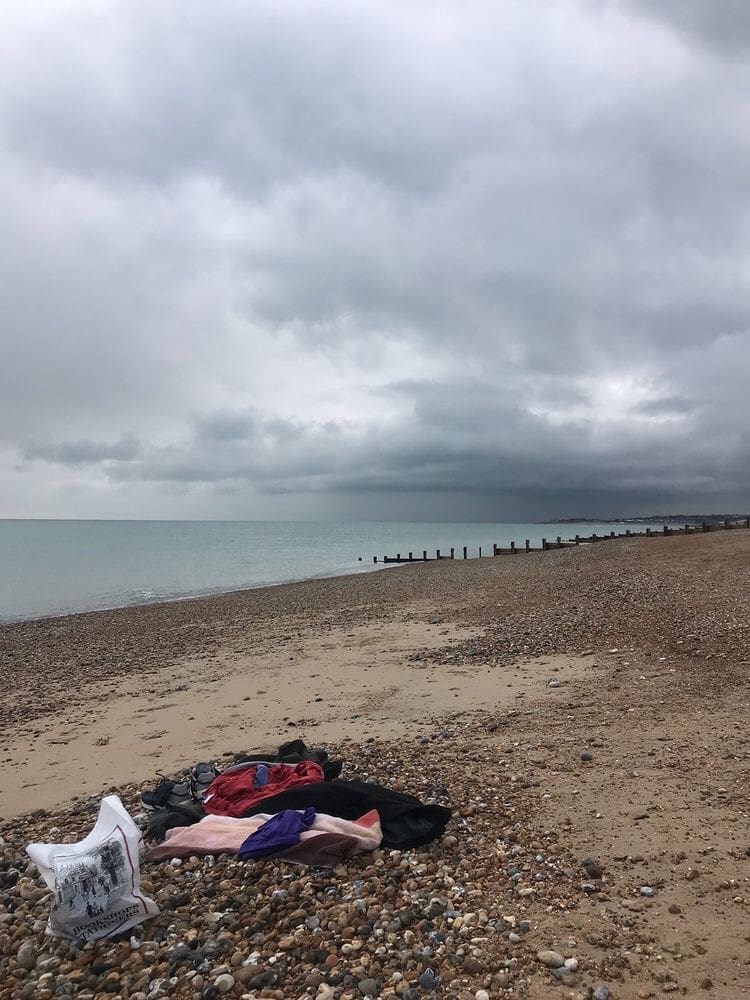
I had a vague understanding that cold water immersion had benefits for the human mind and body after watching Netflix’s much-raved-about documentary My Octopus Teacher (in which a man in South Africa cold water swims year-round and becomes friends with an octopus). And yet, I never fathomed I’d have the willpower to try it, particularly in the midst of an English winter. While in New Zealand’s North Island, the water temperature in winter sits at around 15ºC, England is a lot harsher, dropping to well below 10ºC in December. At these temperatures, cold water shock occurs – you’ll gasp for air, start to breathe rapidly, and your heart rate and blood pressure will rise.
So, why go in? Why the temptation? Well, I’d recently ghosted my therapist and was feeling guilty, plus I desperately missed swimming and friends’ candid snaps from summer back home were taunting me on Instagram. I also kept coming across fans of cold water immersion online, and was fascinated by claims that the cold increased their tolerance to stress, helped some people manage chronic pain, and generally made folk feel happier, calmer and healthier.
The English Channel, even on the sunniest day, is no crystal clear New Zealand seashore. Rain or shine, the water on England’s South-East coast is always a blotchy, pastel blue-grey with a murky brown gradient heading toward the shore. The colours are definitely pretty in a moody sort of way, inspiring the likes of artist William Turner many of whose famed works document the skyline, but swimmers are few and far between – even in the height of summer, the water is breathtakingly cold.
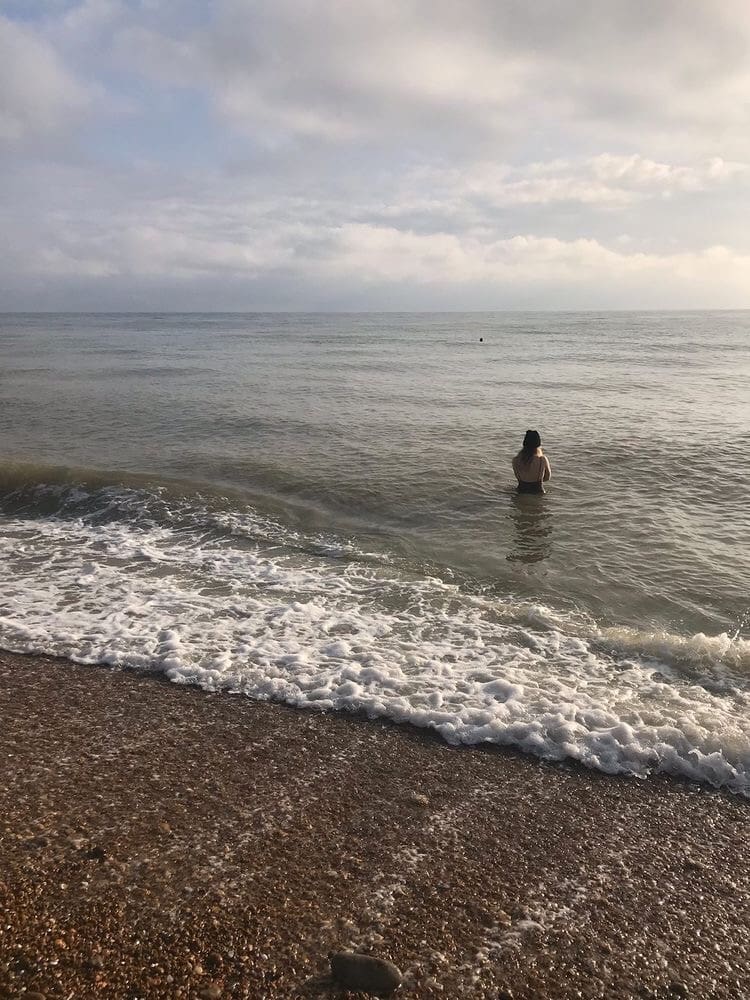

So, equipped with a vague plan to hop in, a few days after arriving on the coast, I went down to sit on the beach with my boyfriend. I’d spotted the odd swimmer and felt joyful as I saw them spill onto the beach after a dip, all red, splotchy and goose-bumped. There was something child-like in their glee, bobbled beanies and gloved hands on bare limbs adding a touch of comedy to the incredibly brave hobby. I watched in awe, hoping one of them could give me the confidence boost I needed.
Thankfully, after a few minutes huddled on the shore, someone walked by in a dryrobe (a warm, jacket-type robe that’s a staple of hardcore cold water swimmers), and I grabbed him for a chat. Kai, from Hawaii, was swimming most days, and helpfully told me about an informal group that meets up on the beach to brave the water together. Later that day, he added me to a couple of Whatsapp groups, and I became a silent observer in the chat, hearing other people’s tales of how many minutes they’d lasted each day, and what time they’d be heading down to strip off on the pebbly beach. If someone from tropical Hawaii could face the Channel, surely, I could too.
Before my first swim, I messaged the exuberantly friendly group, of which I was probably the youngest member, and asked for some tips. I was flooded with kindness, but my favourite words were these: “Take small steps and always frame it as something you really want to do. Make sure you feel safe and secure.” The swimmer is right; safety and security are the backbone of all true enjoyment for anxious folk. Uncertainty is the breeding grounds for anxiety, and while a new thing can be exhilarating, without proper knowledge, research, support and a cocoon of some kind of safety, a Highly Sensitive Person will crumble.
I also think it’s important to remember that there’s a difference between really wanting to do something, and knowing you should for the sake of your own sanity. People don’t necessarily want to exercise, or eat well, or meditate. But we try to do it for our own longevity. So, I felt compelled to get in the water, not enticed. I felt curiosity, not a craving. Plus, pandemic-related worries, completely out of my control, were spinning in my mind, like a washing machine stuck on the strongest cycle. OCD is really good at hijacking a perfectly good day, and I wanted OUT of my niggly noggin.
After seeing people twice my age doing full freestyle laps of the beach, my 27-year-old stamina couldn’t exactly retreat. I was there, I had my uncomfortably skimpy swimsuit on, and was filled with the kind of nervous energy you get before a first date. That sense of longing, with a strong edge of wanting to back out.
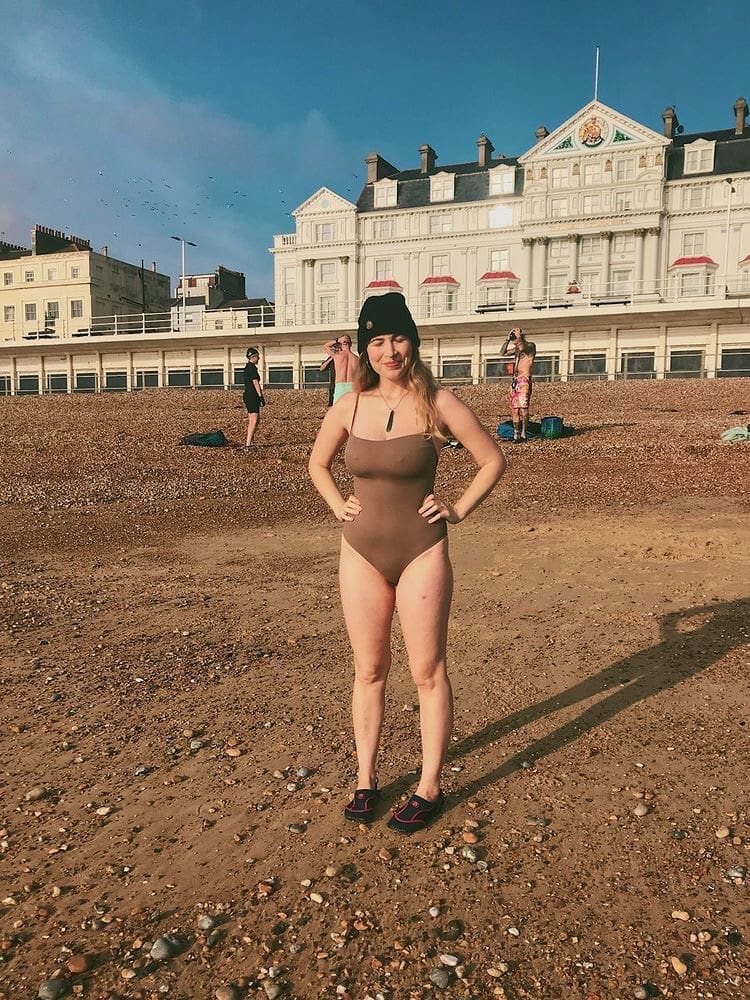

So, I walked in slowly, encouraged by two women also swimming at midday. The stones, combined with the nine-degree water, felt as though they were piercing through my skin. I spent about three minutes wading in, until I finally submerged my shoulders. Wow, was that first swim excruciating.
After the initial pain and shock though, the most miraculous thing happened. A few minutes in, I felt okay. Cold, but numb. In pain, but relaxed. I took deep, slow breaths, and all thoughts except for the present moment melted away. I was meditating! Basically. I’m no expert at it and the intrusive OCD thoughts have always created a barrier, but this was as close to the feeling as I had ever reached. My breath became my only tool to help me through. I was fully aware of every inch of my body. My stinging feet, my aching muscles, my numbing hands. I could feel it all, and my brain softened.
The endorphins afterwards were glorious: a rosy-cheeked, smiley, bouncy high. The people were even more glorious – a mish-mash of souls in their thirties, forties, fifties, heck, even eighties, chatting at pandemic-friendly distances, taking it in turns to make and bring cake. One kind woman even dropped off some swimming shoes at my house the next day with a note that simply said “happy swimming”. Gosh, people can be great.
Learning more about the breath, I discovered my experience wasn’t rare. In fact, cold swimmers’ greatest tool is their own breathing rhythm. Proponents of the Wim Hof Method, founded by a Dutch, Viking-looking man known as ‘The Iceman’ also use breathing techniques, including a controlled type of hyperventilation, to withstand extreme cold. Scientists from Wayne State University in Michigan discovered that Hof’s technique of manually altering his Autonomic Nervous System actually activates a stress response in his body, allowing him to withstand outlandish temperatures. His followers, often sufferers of chronic pain, depression and anxiety, book Wim Hof retreats, where they do the likes of walking barefoot through snow, submerge themselves in ice baths, and practise meditation and yoga.
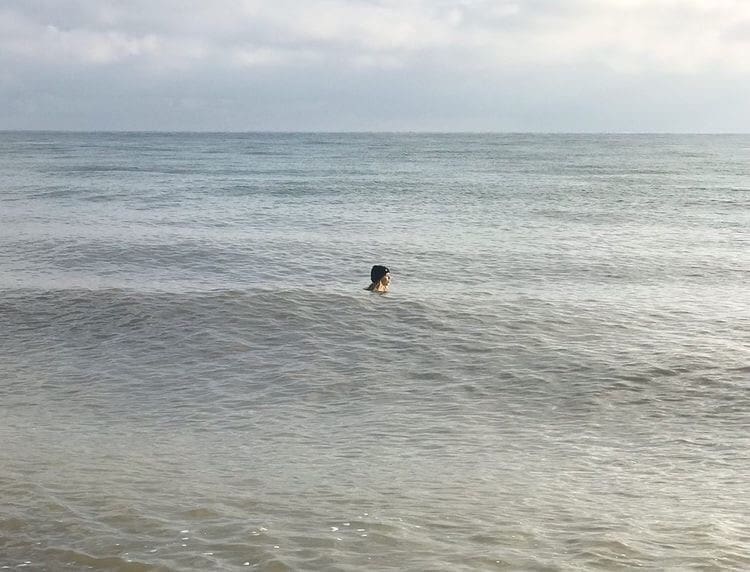

Whilst studies are still limited, the anecdotal evidence of the effects of cold water swimming has broken into the mainstream. The Goop Lab With Gwyneth Paltrow dedicated an entire episode of their six-part series to exploring its effects. And in London, the Hampstead Heath Winter Swimming Club is iconic, braving the great park’s freshwater ponds in the darkest, coldest season. Some people have been swimming at the urban oasis for decades, and any time you visit, a number of elderly can be seen doing their dedicated dips. Another marker of the popularity is the wild swimming organisation, The Outdoor Swimming Society, which boasts 100,000 members from across the world and provides free resources for fans of the ocean, rivers, lakes and lidos. Wim Hof himself has over 400,000 ‘likes’ on Facebook.
While I’m not a follower of Wim Hof myself, I can honestly say that cold water swimming is the closest I’ve felt to ridding myself of the ever-present anxiety coursing through my body. I say coursing as anyone who experiences anxiety will most likely know this feeling – wired, electric, jolting pulses, occurring everywhere from the chest to the feet. But, with swimming, I was pushing my body to the extreme, asking it to do things it had never needed to do, and there was no room for intrusive, OCD thoughts.
The real test is often doing something a second time. After ticking the challenge off, it was difficult to find motivation to get back in. I knew I’d feel better once I did, but I left it a whole week, and by that point, it was early December, and the water had dropped to around eight degrees. Much like how runners look forward to the high they feel post-jog, I was actually looking forward to the rituals that followed the swim. I’d fill up my thermos and a hot water bottle, and pop them in my backpack to shakily retrieve as I hobbled about putting my clothes on. I must say – getting dressed while numb is a lot worse than dragging jeans onto wet limbs.
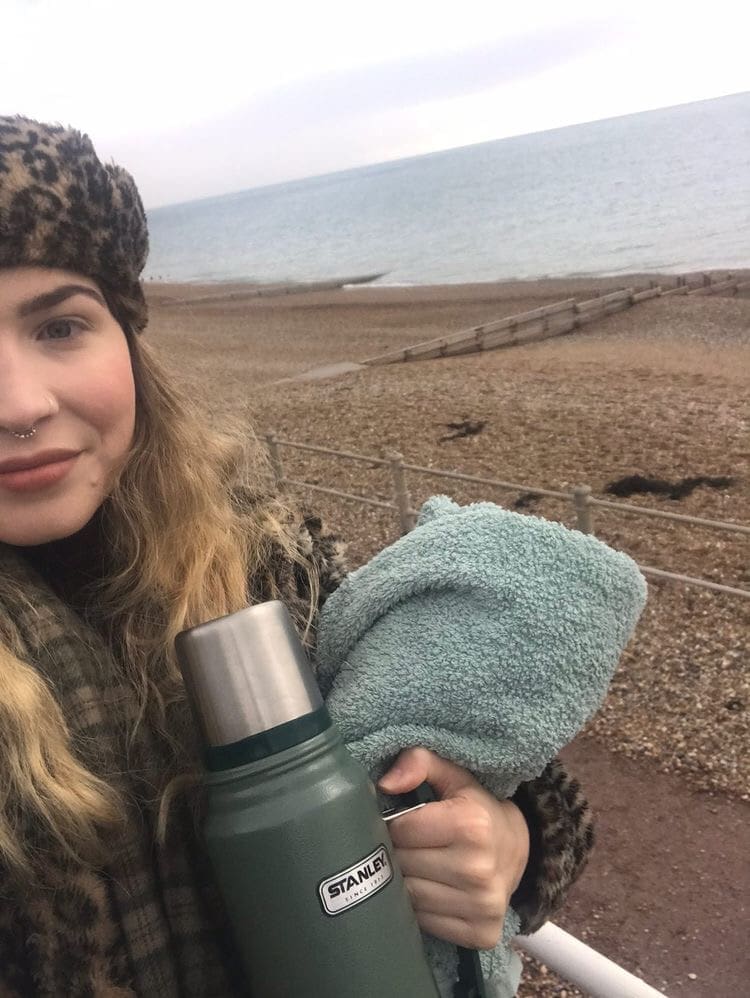

Thankfully, the third and fourth swims were easier. I was adjusting, as fans of this therapeutic tool say you do. You become more tolerant, more resilient. Able to withstand more minutes in the water, slowly, over time. But unfortunately, before I had a real chance to get into the swing of it all, I had come back to London, caught Covid-19 (I’ve since recovered!), and was thrust into self-isolation.
And so, whilst I’m not a cold water hobbyist just yet, as lockdown measures call for us to shelter indoors, I’m thrilled I’ve tried it. The water’s always there, and this madness will become just a blip in time. If nothing else just yet, knowing that I’ve been in the English waters in piercingly cold temperatures is enough of a consolation any time I doubt my own strength. I mightn’t be fit, nor sporty, but the cold doesn’t ask that of you: all it asks is for you to be present, and in return, it may quiet your thoughts, if just for a moment. And that, to me, in this last year of chaos, means everything.

